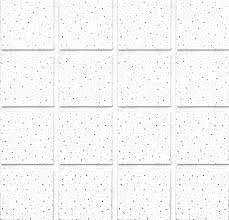Dec . 22, 2024 21:06 Back to list
frp ceiling grid applications and benefits in modern construction design
Understanding FRP Ceiling Grids A Comprehensive Overview
Fiber Reinforced Polymer (FRP) ceiling grids have emerged as a popular choice for architects and builders seeking innovative solutions to modern building design challenges. With their unique properties and numerous advantages, FRP ceiling grids are becoming increasingly prominent in both commercial and residential applications. This article delves into the characteristics, benefits, applications, and installation considerations associated with FRP ceiling grids.
What is FRP?
FRP stands for Fiber Reinforced Polymer, which is a composite material made from a polymer matrix reinforced with fibers. The fibers are typically made from materials such as glass, carbon, or aramid. This combination results in a material that is lightweight yet significantly stronger than traditional materials. FRP is highly resistant to corrosion, chemicals, and environmental factors, making it an ideal choice for various applications, including ceiling systems.
Characteristics of FRP Ceiling Grids
FRP ceiling grids come with several distinctive characteristics
1. Lightweight One of the most significant advantages of FRP is its low weight, which simplifies transportation and installation.
2. Corrosion Resistance Unlike metal grids that can rust or degrade over time, FRP is impervious to moisture and chemicals. This property makes it well-suited for environments that are subject to high humidity or exposure to corrosive substances.
3. Durability FRP ceiling grids are highly durable, offering long-lasting performance even in demanding conditions. Their strength ensures that they can support various types of ceiling panels without sagging or failing.
4. Thermal Insulation The material offers good thermal insulation properties, contributing to overall energy efficiency in a building.
5. Customizability FRP ceiling grids can be manufactured in various colors, designs, and sizes, allowing for customization to fit a building’s aesthetic and functional requirements.
Benefits of FRP Ceiling Grids
The adoption of FRP ceiling grids provides several benefits
1. Cost-Effectiveness While the initial costs of FRP might be higher than traditional materials, the longevity and low maintenance needs often lead to cost savings in the long run.
2. Ease of Installation The lightweight nature of FRP allows for easier handling and quicker installation, reducing labor costs and the project timeline.
3. Enhanced Safety FRP is a non-conductive material, providing additional safety in environments where electrical hazards may be present. Additionally, it does not support combustion, making it safer in case of fire.
frp ceiling grid

4. Aesthetically Pleasing FRP ceiling grids can enhance the visual appeal of interiors with their sleek designs. They can also be integrated seamlessly with lighting fixtures and HVAC systems.
Applications of FRP Ceiling Grids
FRP ceiling grids find applications in various sectors
1. Commercial Spaces Offices, retail spaces, and educational institutions often utilize FRP ceiling grids due to their aesthetic versatility and durability.
2. Industrial Facilities Manufacturing plants and warehouses benefit from the corrosion resistance of FRP, especially in areas where chemicals are handled.
3. Healthcare Facilities Hospitals and clinics utilize FRP ceiling grids to maintain clean and sterile environments, as these materials do not harbor bacteria.
4. Food Processing In food-related businesses, the hygienic properties of FRP are advantageous as they can be easily cleaned and sanitized.
Installation Considerations
When installing FRP ceiling grids, several factors should be taken into account
1. Structural Support Ensure that the existing structure can support the weight and design of the FRP ceiling grids.
2. Compatibility with Other Systems Coordinate with electrical and HVAC systems to ensure that the FRP installation does not impede functionality.
3. Local Building Codes Verify that the chosen FRP ceiling grid complies with local building codes and regulations.
4. Professional Installation Although FRP is relatively easy to install, hiring professionals can ensure that the job is done correctly and safely.
Conclusion
FRP ceiling grids represent an innovative solution to modern construction challenges, offering a unique blend of durability, aesthetics, and practicality. As building projects demand materials that can withstand the test of time while also providing a pleasing visual appeal, FRP ceiling grids stand out as an ideal choice. Their wide range of applications, combined with the benefits of corrosion resistance and low maintenance, make them an advantageous option for various industries, paving the way for a more sustainable and efficient future in construction.
-
Durable Ceiling T Grid Systems | Easy InstallationNewsAug.29,2025
-
PVC Gypsum Ceiling: Durable, Laminated Tiles for Modern SpacesNewsAug.28,2025
-
Pvc Gypsum Ceiling Is DurableNewsAug.21,2025
-
Mineral Fiber Board Is DurableNewsAug.21,2025
-
Ceiling Tile Clip Reusable DesignNewsAug.21,2025
-
Ceiling T Grid Modular DesignNewsAug.21,2025







